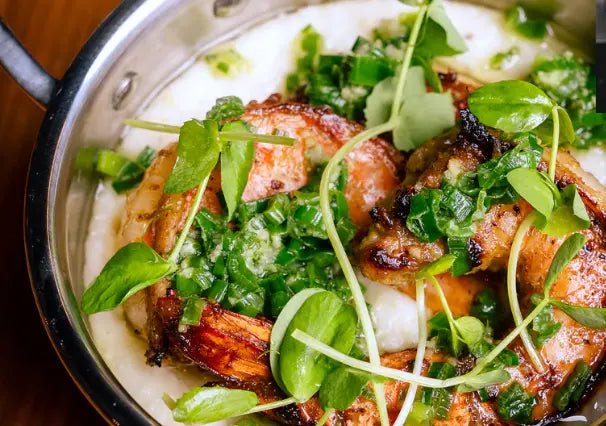Caramel is a wonderful thing. Its sticky, oozy golden goodness can be used for sauces, cakes, tarts, flans, slices, bars, cookies, scrolls…the list is endless! There’s often a certain nostalgia surrounding caramel as well, as it is popular among children and has been for generations. There is no need to be intimidated by the idea of making caramel at home, it’s not difficult if you remain vigilant. So a good set of watchful, attentive eyes is actually your key ingredient. Although it's not hard to caramelize sugar, the process can be intimidating if you haven't done it before. It may take a couple of attempts before able to perfect the art of turning your caramel into a deep amber liquid, that’s deliciously sweet and not quite burnt. We’ve got some advice for you to help you get your caramel just right. Before you know it, you’ll be whipping up caramel sauces in a flash!
PART 1: HOW TO AVOID BURNING YOUR CARAMEL
Making caramel involves melting sugar and butter in a heavy-bottomed fry pan or saucepan. This works best with top-quality cookware, like the CRISTEL® range, that is carefully designed to distribute heat evenly, ensuring that the sugar will cook at an even rate.
This is an essential part in preparing caramel. To avoid burning your caramel, it’s a matter of being vigilant. Once the sugar has melted, continue cooking it until it turns into a rich amber color. It should be removed from the heat source when it begins to smoke and foam a little around the edges.
Burning most commonly occurs when the caramel is left for too long on the heat source or when the temperature is too high. Watch out for the color of the caramel too, it should not darken too much. Burnt caramel can also be tricky to remove from pans so don’t let your guard down during this fairly quick process!
PART 1: HOW TO AVOID BURNING YOUR CARAMEL
Making caramel involves melting sugar and butter in a heavy-bottomed fry pan or saucepan. This works best with top-quality cookware, like the CRISTEL® range, that is carefully designed to distribute heat evenly, ensuring that the sugar will cook at an even rate.
This is an essential part in preparing caramel. To avoid burning your caramel, it’s a matter of being vigilant. Once the sugar has melted, continue cooking it until it turns into a rich amber color. It should be removed from the heat source when it begins to smoke and foam a little around the edges.
Burning most commonly occurs when the caramel is left for too long on the heat source or when the temperature is too high. Watch out for the color of the caramel too, it should not darken too much. Burnt caramel can also be tricky to remove from pans so don’t let your guard down during this fairly quick process!

PART 2: HOW TO MAKE THE PERFECT CARAMEL
PART 3: EXAMPLE WITH THE TARTE TATIN RECIPE
Caramel is the key ingredient to one of France’s most well-known and dearly loved desserts – the tarte Tatin. This delectable upside-down apple pie is named after the French hotel which served it as its signature dish.
You can start out by making a rich buttery caramel in a CRISTEL® frying pan, and then add some peeled quartered Granny Smith apples into the pan, turning them to allow them to caramelize. Add a little ground cinnamon and vanilla extract.
Once the apples are cooked, remove the pan from the heat and lay your shortcrust pastry across the top of the pan, tucking it in around the edges around the apples. You can simply remove the handle from the frying pan when you pop it all into the oven (20 minutes at 400°F).
When it’s time, you can turn the tarte Tatin out onto a serving platter or board so the pastry is underneath the caramelized apples. And voilà!

















